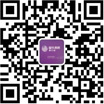关于新托福写作(上)
“托福”(TOEFL) 全名为“检验英语为非母语者的英语能力考试 (The Test of English as a Foreign Language) ”,是由美国教育考试服务中心 ( Educational Testing Service, 简
称“ETS”) 举办的英语能力考试。美国和加拿大共有 2300 多所院校要求国际留学生必须提供托福成绩,作为衡量外国学生的英语水平以及取得入学或申请奖学金的要求。
2005 年 9 月,ETS 在 全 球 推 出 了“ 新 托 福 ” 考 试, 即 TOEFL iBT (internet BasedTest)。TOEFL iBT 能够反映学生在英语国家大专院校学习和校园生活中的语言应用能力。
新托福考试的构成如下 :
|
Task |
Number of Questions |
Time |
Score |
|
Reading |
3–5 passages / 12–14 questions each |
60–100 minutes |
30 |
|
Listening |
4–6 lectures / 6 questions each 2–3 conversations / 5 questions each |
60–90 minutes |
30 |
|
Speaking |
Independent — 2 questions Integrated — 4 questions |
20 minutes |
30 |
|
Writing |
Integrated — 1 question Independent — 1 question |
20 minutes 30 minutes |
30 |
|
Total Score 120 |
|||
改革后的新托福考试更加注重对语言输出能力的考查,这在写作部分得到了充分的体现。与“老托”相比,新托福的写作部分主要发生了以下几点变化 :
1. 分数的改变 :6 分→ 30 分。在“老托”中不怎么受到重视的写作部分,在新托福考试中占到了总分 (120 分 ) 的 1/4。
2. 评分体制的改变 :6 分制→ 5 分制 ( 即 0 ~ 5 分,5 分为满分,每 0.5 分一个级别 )。
为了便于理解,ETS 还在每张成绩单上加入了分数级别的能力描述。如下所示 :
|
Integrated Writing Rubrics |
||
|
5 |
A response at this level successfully selects the important information from the lecture and coherently and accurately presents this information in relation to the relevant information presented in the reading. The response is well organized, and occasional language errors that are present do not result in inaccurate or imprecise presentation of content or connections. |
|
|
4 |
A response at this level is generally good in selecting the important information from the lecture and in coherently and accurately presenting this information in relation to the relevant information in the reading, but it may have minor omission, inaccuracy, vagueness, or imprecision of some content from the lecture or in connection to points made in the reading. A response is also scored at this level if it has more frequent or noticeable minor language errors, as long as such usage and grammatical structures do not result in anything more than an occasional lapse of clarity or in the connection of ideas. |
|
|
3 |
A response at this level contains some important information from the lecture and conveys some relevant connection to the reading, but it is marked by one or more of the following: * Although the overall response is definitely oriented to the task, it conveys only vague, global, unclear, or somewhat imprecise connection of the points made in the lecture to points made in the reading. *The response may omit one major key point made in the lecture. *Some key points made in the lecture or the reading, or connections between the two, may be incomplete, inaccurate, or imprecise. *Errors of usage and/or grammar may be more frequent or may result in noticeably vague expressions or obscured meanings in conveying ideas and connections. |
|
托福写作课程中心
查看更多 >托福快讯
- 2018托福考试时间表已公布... 2018-33-04
- 2015年的托福考试快要结束... 2015-06-10
- 2019-52-07
- 不管你是不是英语专业的,... 2016-07-22
- 啃单词、练听力、梦里都在... 2016-41-03



